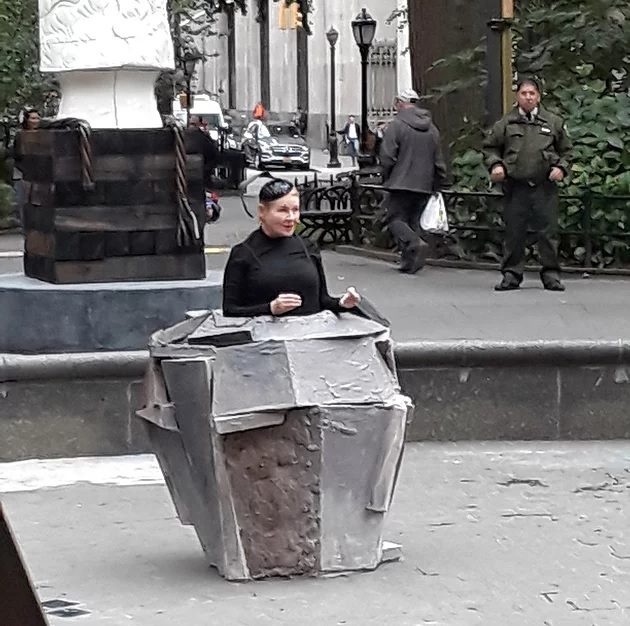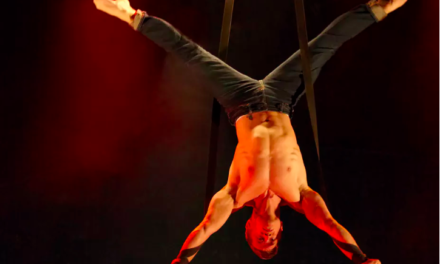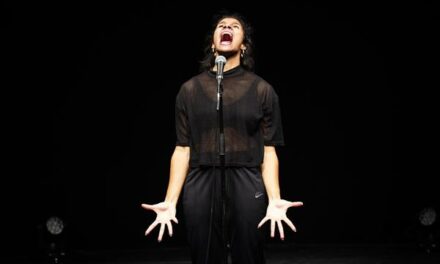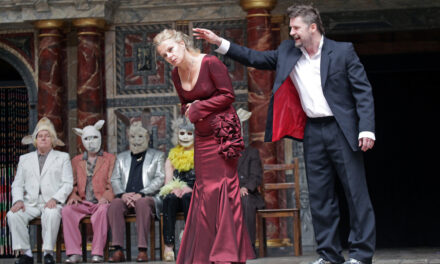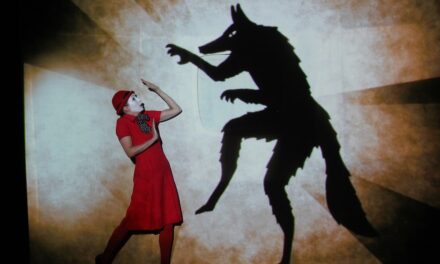Nothing you do this week will likely be more worthwhile than spending 40-odd minutes with Dianne Wiest performing excerpts of Samuel Beckett’s Happy Days for passersby in Madison Square Park. Every lunch hour until Friday, beginning at noon, Wiest is performing as Winnie, enclosed not in a mound but in a wacky, understated, rocklike sculptural costume designed by the visual artist Arlene Shechet.
This event has arrived totally under everyone’s radar. The Park has dropped the ball on publicity. But maybe that’s okay. No prefatory fanfare, no curtain, no stage, or framing gestures. Wiest, in situ, unobtrusively miked, just launches into the famous, indomitable, monologic role she played so searingly last year at Theatre for a New Audience, plopped down at one end of a dry fountain.
People mill about, eat, smile, scoff, or ignore her. Some listen for a while and leave, others stay for 5 or 20 minutes. About 100 stayed the whole time on Tuesday. The various reactions are as absorbing as Wiest. A teenager sweeps in on a skateboard and lingers, unable to spurn the scene until he understands more about it. A black-jacketed guy who could be a Sopranos’ thug deadpan sneers, smiles involuntarily, then looks around to see who might have seen him do that.
This is an astonishing event—one of those rare, precious happenings that makes you thrilled to live in New York City. Whether you saw Wiest’s performance in the whole play last year or missed it, you should go see this. It isn’t obvious, when you see Beckett in the theater, how his work might connect to the experimental tradition of ambient performance that harks back to John Cage. The idea Cage envisioned of a continuously running event that people drop in on at will, that blurs the boundaries between art and life, seems contrary to begin with to the purposes of our most authoritative playwright. There is a deep connection, though. It starts with the strong influence of visual art on Beckett and links to the fractured, indefinite, ontologically precarious nature of the restless logorrheic voices that drive all his best dramatic and nondramatic prose.
The persistent voice at Madison Square Park is clearly Wiest’s, if you happen to be looking directly at her, but for the many who aren’t, or don’t want to, Beckett’s remarkable stream of pregnant, matter-of-fact speculation and introspection on the reality and value of every passing moment could also be coming from a radio, or the city’s ambient hubbub, or your own mind. This is environmental Beckett. Beckett as a condition of urban life.
Go see Wiest if you want to understand this in your skin.
Passing By Samuel Beckett with Dianne Wiest
Madison Square Park, NYC
Oct. 22-26, 2018. 12-1.
This article first appeared in Jonathan Kalb on October 23, 2018, and has been reposted with permission.
This post was written by the author in their personal capacity.The opinions expressed in this article are the author’s own and do not reflect the view of The Theatre Times, their staff or collaborators.
This post was written by Jonathan Kalb.
The views expressed here belong to the author and do not necessarily reflect our views and opinions.

